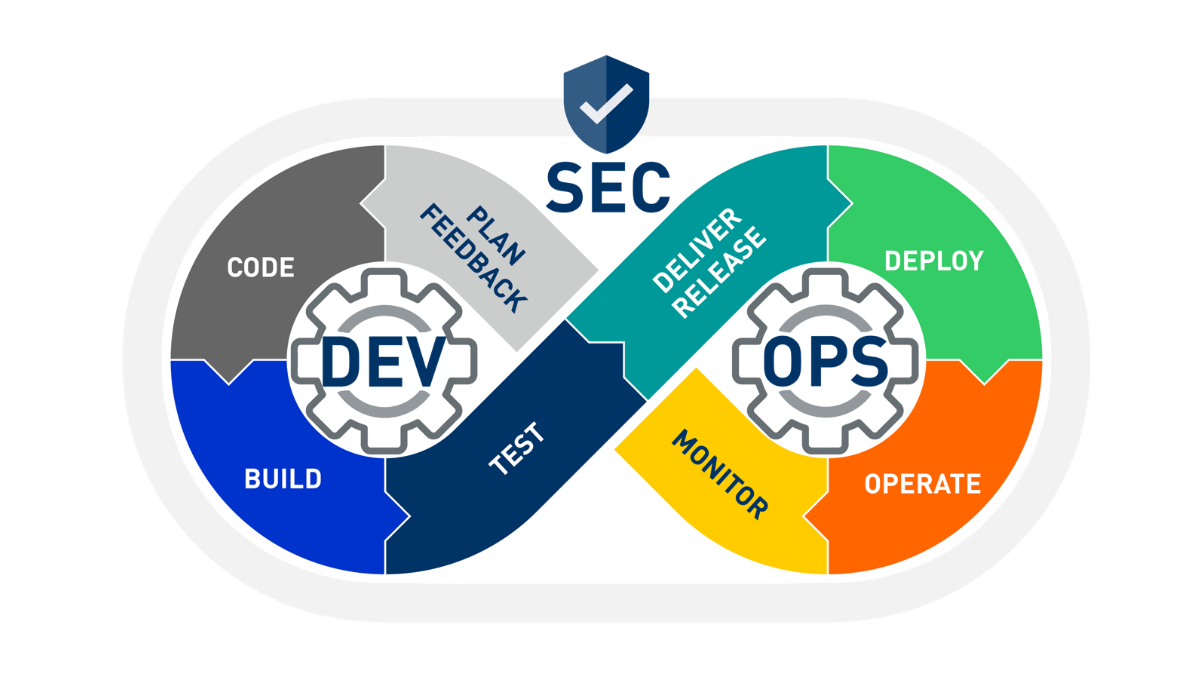
Technological advancement has taken the world by storm. Every aspect of life is either influenced or driven by technology. However, with the increasing influence of technology, the number of security threats and vulnerabilities is also elevating. You have specific traditional and manual methods to check for these security threats. However, carrying out regular tests and surveys through traditional methods becomes very tedious. Sometimes, during regulation auditing, ensuring that all employees comply with the regulations is a difficult task to manage.
DevSecOps is a security tool that has recently gained prominence among companies. It integrates three different aspects of an organization, namely development, security, and operations. If all these verticals are integrated, the corresponding teams shall also be aware of what is going on within the firm. This ensures active participation from all ends, increases productivity, and ensures compliance with the rules and regulations.
This security system is most suitable for companies that deal with gigantic amounts of data, such as those providing cloud services. Taking inspiration from them, here is a guide to understanding the platform which is most suitable for such an integrating security method.
Table of Contents
What is DevSecOps?
DevSecOps is a short form for the development, security, and operations. The security process includes the aspects of security and operations into the development cycle of an organization. Moreover, this widely adopted method has united software development with IT operations, reducing the elaborate lifecycle for creating software and application.
When you integrate this process into your development operations, you can release software, different features, and a variety of upgrades at a greater pace. Faster upgrades mean greater security threats to your system. These threats are neutralized by the security aspect of the firm, making your development cycle more intact and robust.
Customers now have dynamic needs, and every company’s primary objective is to fulfill those changing requirements. Rolling-out faster changes create pressure on your security department to ensure no loopholes or faults in your system. The pre-existing security procedures are not adept at handling such faster upgrades. Hence, implementing regular automated tests comes in handy in comparison to manual tests.
Previously, companies followed the DevOps method integrating only the operations aspect into the development cycle. However, to maintain this growing pace, your company must have its security procedures intact. Hence, the third aspect was adopted by various companies.
Features of Successful DevSecOps Implementation
Recently, a long list of companies have adopted the DevSecOps. Numerous essential features make this mantra and its implementation success. The first feature is pre-commit hooks. Pre-commit hooks or checks are those which are conducted before making any changes in the pre-existing codes.
Using pre-commit hooks makes the implementation more powerful as it reduces the burden of tedious tasks, increases the productivity of your employees, and ensures that checks are conducted regularly at all times. The second feature is to carry out commit-time tests. These tests are automated and provide rapid and instantaneous reports to the developers.
The third feature of a successful DevSecOps implementation is the time-testing and analysis feature. After conducting commit-time tests, you will create an application and rerun tests, SAST scans, and third-party analysis. All these processes shall help you churn a practical and useful output. The fourth useful feature is conducting deployment tests.
In a successful implementation of the security mantra, the application is subjected to a test environment and multiple pre-and post-deployment tests. It involves long, consistent inspection as well as regular monitoring of application post-production. All these features constitute a successful security strategy in the development cycle.
Use of DevSecOps in Cloud-Providing Platforms
DevSecOps, the infamous security strategy, has particularly thrived among reputed organizations providing cloud-related services. The leading cloud service providers in the IT field include Microsoft Azure, IBM cloud, google cloud, and many more. This marks a step towards safeguarding the cloud environment from constant cyberattacks and major security threats.
A report based on global security trends in the cloud services suggested that approximately 45% of top-notch security players believe that adopting this model is a significant step towards creating a strong defense for the cloud atmosphere against cyber threats. This study reiterates the essential role that the security strategy potentially plays in aiding companies to protect their code repositories.
DevSecOps is an important security mantra adopted by companies and organizations across the world. Technology is influencing every industry in the world. This growing influence is bringing multiple security threats with itself. Hence, there is a need to fortify your company’s data by integrating useful automated security methods into your development process. This is essentially the objective of this infamous mantra.